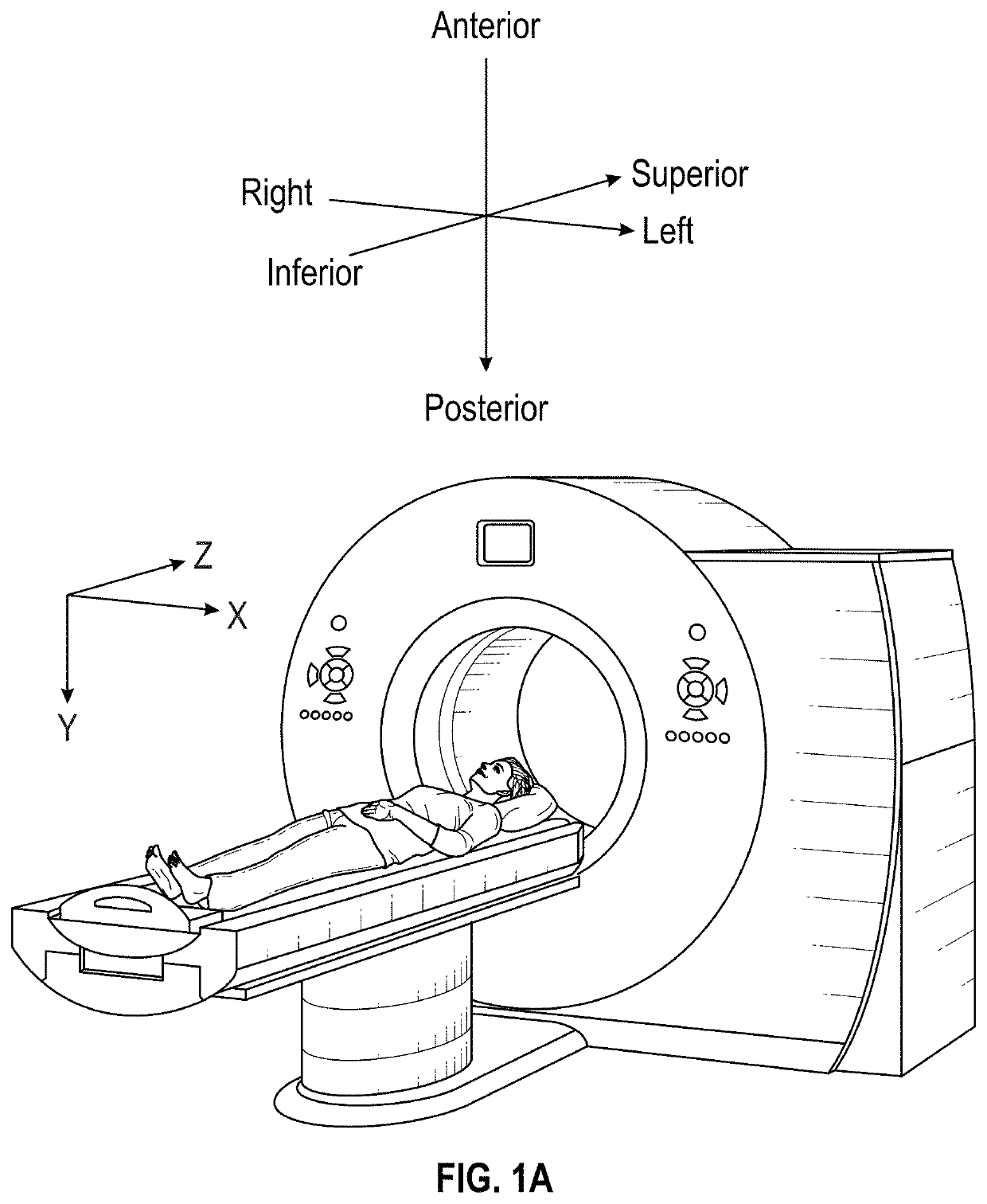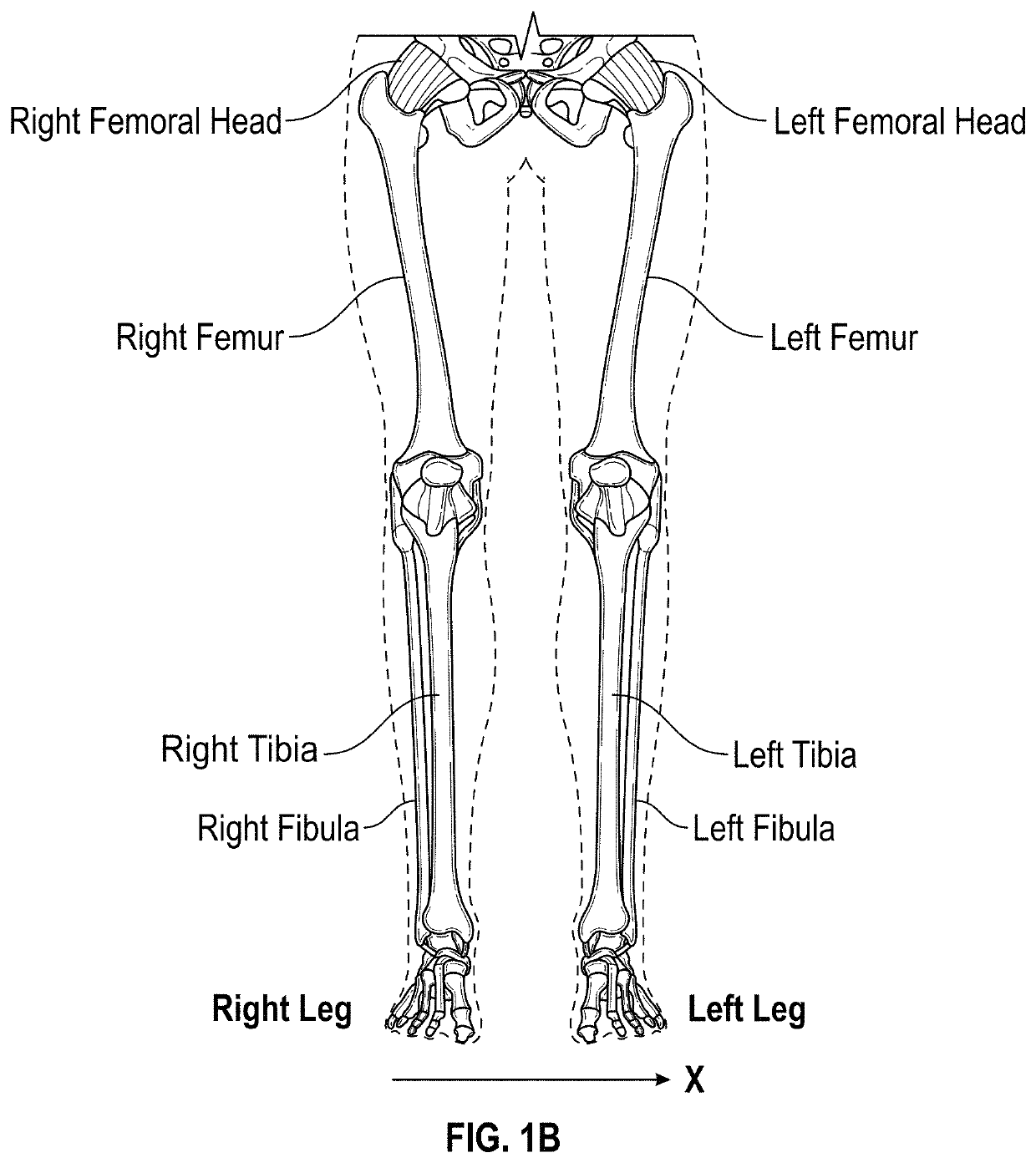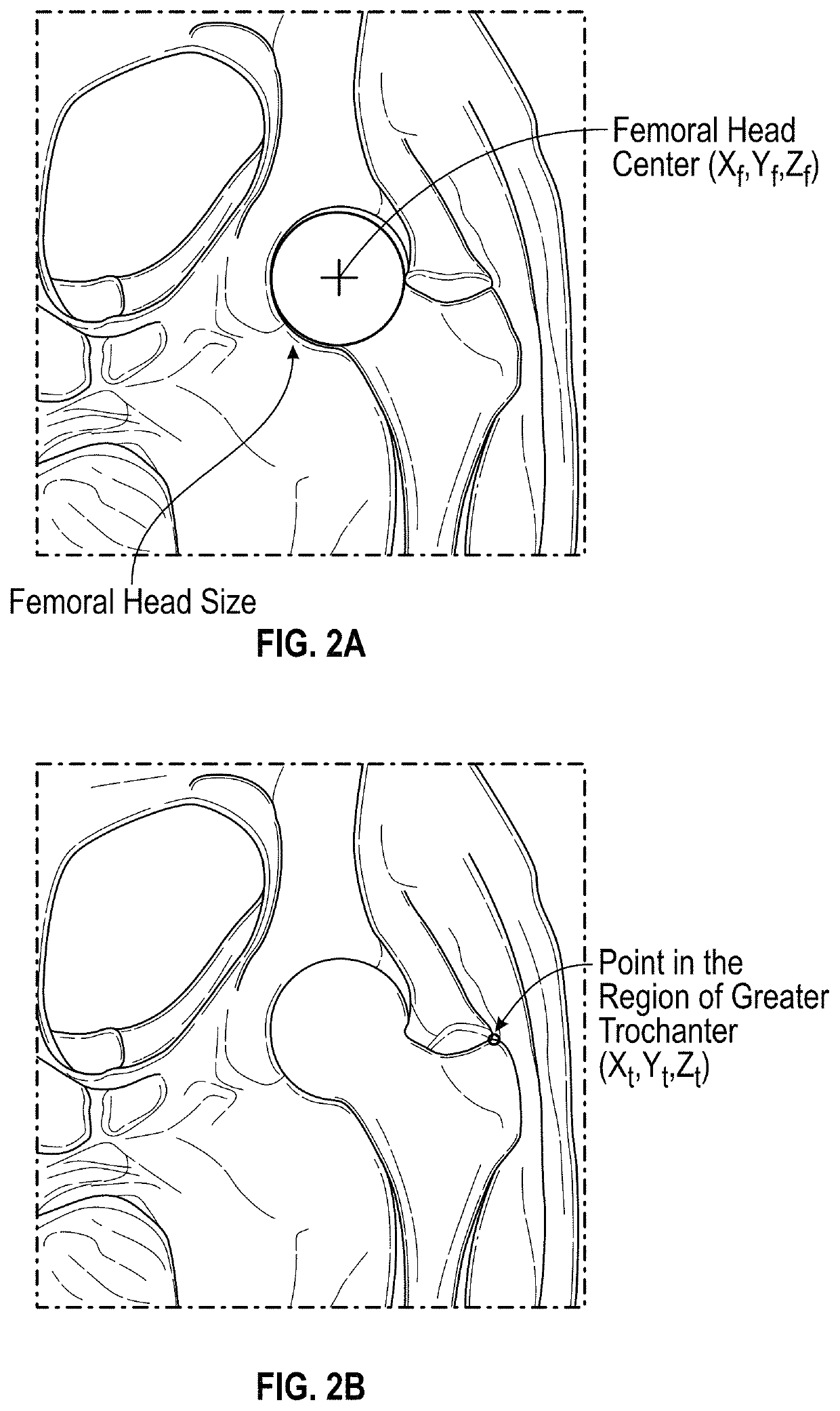Knee replacement surgical cut planes estimation for restoring pre-arthritic alignment
a pre-arthritic alignment and surgical technology, applied in the field of computer-aided knee replacement preplanning, can solve the problems of limiting the total range of knee motion, affecting the stability of the knee, so as to achieve the effect of optimal leg stability
- Summary
- Abstract
- Description
- Claims
- Application Information
AI Technical Summary
Benefits of technology
Problems solved by technology
Method used
Image
Examples
second embodiment
between ends of different line segment triples (represented by unit vectors Hm=(cos ηm, sin ηm), as illustrated in FIG. 19, and variations of angular orientation ηm of the vector Hm, relative to a local tangent vector T (θm) for the curve χ(x,y)=0. For this embodiment, the expression for an intermediate wear vector w(φ) is multiplied by a factor {Δsm tan (θm−θm)}, where (θm−ηm) is an angular difference between the unit vector Hm and a tangent line vector, Tm=(cosθm, sinθm) for the curve χ(x,y)=0, as illustrated in FIGS. 19A, 19B and 22. For this second embodiment, the wear vector w′ (φ) is expressed as
[0134] w′(ϕ)=∑p=m-1m+1E0N(θp)cos2ψpcos(θp-ηp)Δsp(C(ψp)) w′(ϕ)=∑p=m-1m+1E0{-i sinθp+j cosθp}cos2 (θ-ϕp)cos(θp-ηp)ΔspC(θ-ϕp)=i w1′(φ)-j w2′(φ),(37) w1′(ϕ)=-∑p=m-1m+1E0 cos(θ-ϕp)sinθpcos(θp-ηp)ΔspC(θ-ϕp)(38)w2′(ϕ)=-∑p=m-1m+1E0 cos(θ-ϕp)cosθpcos(θp-ηp)ΔspC(θ-ϕp)(39)
N((θp)=−i sinθp+j c...
third embodiment
[0137]In a third embodiment, independent first and second optimal angles, φ=φ1(min), and φ=φ2(min), can be estimated as solutions of the respective equations
∂w1 / ∂φ(φ=φ1(Min))=0, (46)
∂w2 / ∂φ(φ=φ2(min))=0, (47)
or a weighted sum or other linear or nonlinear combination of φ1 (min) and φ2 (min) can be used to estimate φ(min), corresponding to the respective constant vector directions i and j. Estimation of an optimal offset angle is not limited to the values of φ satisfying one or more of the Eqs. (45A), (46) and / or (47).
[0138]The first and second embodiments may be integrated by re-expressing Eq. (37) as
[0139]w′(ϕ)=∑p=m-1m+1E0{-i sinθp+j cosθp}cos2(ϕ-θp)[mod]C(ϕ-θp)=i w1′(φ)-j w2′(φ),(48-1)
where the user chooses
[mod]=cos (θp−ηp)Δsp or (48-2)
[mod]=1. (48-3)
[0140]The preceding development focuses on analysis of embodiments of normal (perpendicular-oriented) wear for an ASJ structure, directed normal to the local ASJ structure that is represented by the curve χ(x,y)...
PUM
 Login to View More
Login to View More Abstract
Description
Claims
Application Information
 Login to View More
Login to View More - R&D
- Intellectual Property
- Life Sciences
- Materials
- Tech Scout
- Unparalleled Data Quality
- Higher Quality Content
- 60% Fewer Hallucinations
Browse by: Latest US Patents, China's latest patents, Technical Efficacy Thesaurus, Application Domain, Technology Topic, Popular Technical Reports.
© 2025 PatSnap. All rights reserved.Legal|Privacy policy|Modern Slavery Act Transparency Statement|Sitemap|About US| Contact US: help@patsnap.com



